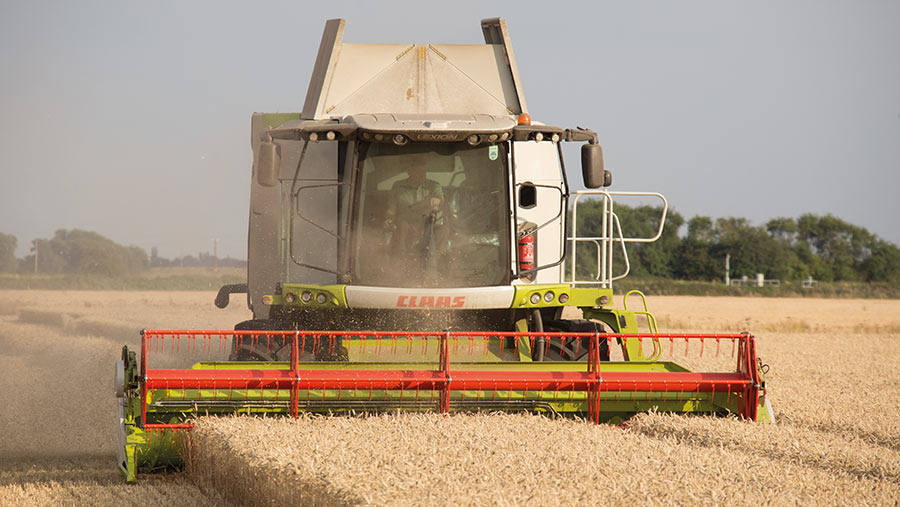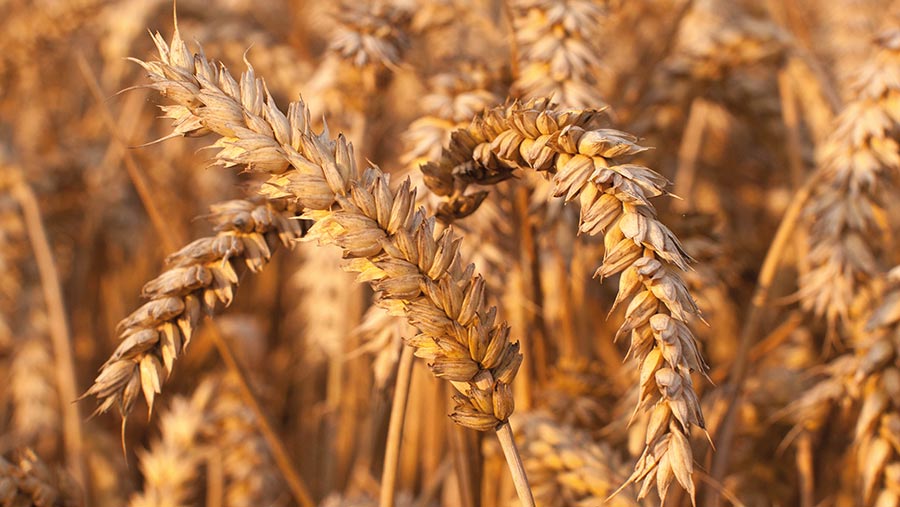How to narrow the UK yield gap to help improve food security
 © Tim Scrivener
© Tim Scrivener UK cereal yield potential is calculated to be between 14t/ha and 19t/ha, yet current averages are about 7-9t/ha, which gives considerable scope for improvements, say experts at crop consultant Adas’ Yield Enhancement Network (YEN).
Crop yields are a critical measurement and target for growers, but perhaps their greatest importance lies in their role in food security.
“Yield has become somewhat unfashionable, despite its ultimate control over profitability and resource use efficiency,” says Roger Sylvester-Bradley, head of crop performance at Adas and YEN lead.
“There is huge capacity on farm to increase yields and, therefore, profitability. Yield potential is a good target for growers, breeders and industry to strive for to boost profits and food security, while also saving land for other uses,” he adds.
See also: How a Cornish mixed farmer won bronze in wheat YEN competition
Food security
A big question mark looms over food security due to the conflict between Russia and Ukraine. The two countries account for nearly 30% of global wheat exports and 80% of sunflower oil exports, so the war has resulted in a big hike in food price inflation.
As fertiliser prices have risen sharply, most growers are trimming back application rates and focusing on maintaining yields while reducing inputs. With further concerns about the high price of fuel and limited rain this spring, striving for yield is even more challenging.
So how can UK growers narrow the gap between a crop’s potential yield and that achieved in the field, which is often limited by a lack of sun and water?
Potential yield
Yield potential is defined as the yield of a good variety that supports efficient conversion of light and water into biomass. It is grown with good husbandry so that nutrients are non-limiting and biotic stresses from weeds, pests and diseases are effectively controlled, and with sufficient light and water available.
However, in reality a number of factors can reduce yield potential, such as poor soil rooting, late ground cover in spring, premature senescence of the green canopy and inefficient photosynthesis.
Christina Baxter, senior crop research consultant at Adas, says potential crop yield depends on how efficiently light radiation and water resources are captured and converted into harvested crops. Within the YEN, potential field yields are calculated using the availability of these two – light and water.
“The size of our yield gaps shows that increased yields are achievable anywhere in the UK, and we see these gaps as valuable targets within the YEN for UK growers to work out how to improve their productivity,” she says.

© Tim Scrivener
Light model
How much light a crop can intercept depends on its canopy size, and there are two ways growers can encourage crops to intercept more light. First, by aiming for the crop canopy to cover the ground fully through most of April, and then by delaying senescence and keeping a greener canopy through July and into August.
Doing this will help crops intercept 60% of available light energy over the season compared with the current UK crop average of only 47%.
“It is particularly important to think about how to maximise green area index at the later end of the season, in August – or even September in the North – as this contributes most to greater grain fill and higher crop yields,” adds Dr Baxter.
Water model
The amount of water available to crops depends on the soil type, its water-holding capacity and the amount of rain from April to July. The YEN model assumes soils are at full water-holding capacity after the winter, and then soil texture, depth and stone content are used to calculate its water-holding capacity.
Soil texture is assessed for both the top 30cm of topsoil and the deeper subsoil right down to two metres, or any underlying rock.
“Subsoil details enable us to assess how far down the roots can grow, while the stone content helps us to identify what proportion of the soil can’t hold water,” she says.
Clearly, a soil’s texture has a significant influence on its water-holding capacity. Clay soils have a greater capacity to retain water compared with sandy soils, while high-yielding crops are seen to be more efficient at converting the total amount of available water into biomass.
The YEN water availability calculator assumes that a crop can capture 75% of the water down to two metres in the soil profile, unless soils are shallower, and then adds the rain from April to July.
The key point to take away, says Dr Baxter, is that increased yields are achievable anywhere in the UK, and that growers can aim to target YEN potential yield values on their own farms.

